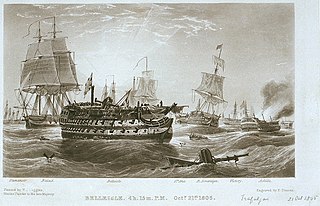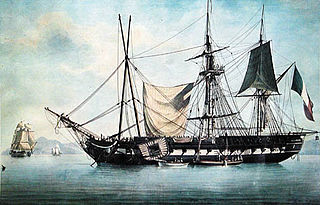Seven ships of the British Royal Navy have been named HMS Dido, after Dido, the legendary founder and queen of Carthage.
Eight ships of the Royal Navy have borne the name HMS Northumberland after the English county of Northumberland, or the Dukedom of Northumberland. Another was planned but later cancelled:
Six ships of the Royal Navy have been named HMS Bacchante, from "Bacchante" – the name for a priestess of the Roman god Bacchus. Yet another ship of this name was ordered but later cancelled.
Eight Royal Navy ships have borne the name HMS Ambuscade:

Lion was a Téméraire class 74-gun third rate ship of the line of the French Navy, which later served in the Royal Navy. She was named Lion on 23 April 1790 and built at Rochefort from August 1791 until June 1794. She was renamed Marat on 28 September 1793 and then Formidable on 25 May 1795, with the changing fortunes of the French Revolution.

Astrée was a 44-gun Pallas-class frigate of the French Navy, launched at Cherbourg in 1809. In December of the next year she captured HMS Africaine. The Royal Navy captured Astrée in 1810 and took her into service under her French name, rating her as a 38-gun frigate, but then in 1811 recommissioned her as HMS Pomone. She served during the War of 1812 and was broken up in 1816.
Nine ships and one shore establishment of the Royal Navy have been named HMS Wasp, with one other government vessel using the name:
Six ships of the Royal Navy have borne the name HMS Astraea, HMS Astree or HMS Astrea, after the figure of Astraea in Greek mythology:
Seven ships of the Royal Navy have been named HMS Melpomene after the Muse of Tragedy in ancient Greek mythology.
Eleven ships of the Royal Navy have borne the name HMS Blonde:

Pomone was a 40-gun frigate of the French Navy, launched in 1785. The British captured her off the Île de Batz in April 1794 and incorporated her into the Royal Navy. Pomone subsequently had a relatively brief but active career in the British Navy off the Atlantic and Mediterranean coasts of France before suffering sufficient damage from hitting a rock to warrant being taken out of service and then broken up in 1803.

Pomone was a 40-gun Hortense-class frigate of the French Navy, built at Genoa for the puppet government of the Ligurian Republic, which was annexed as part of France in June 1805, a month after Pomone was completed. On 30 January 1807, she collided with the French frigate Muiron.
Several ships of the French Navy have borne the name Pomone, after the Roman goddess Pomona:

Engageante was a 26-gun frigate of the French Navy, only ship of her class, built to a design by Jean-François Etienne. The British captured her in 1794 and converted her to a hospital ship. She served as a hospital ship until she was broken up in 1811.

The Leda-class frigates, were a successful class of forty-seven British Royal Navy 38-gun sailing frigates constructed from 1805-1832. Based on a French design, the class came in five major groups, all with minor differences in their design. During their careers, they fought in the Napoleonic Wars and the War of 1812. Forty-five of the 47 were eventually scrapped; two still exist.
Eight ships of the Royal Navy have been named HMS Teazer :
HMS Decade was a 36-gun fifth-rate frigate of the Royal Navy. She was formerly the French Galathée-class frigate Décade, which the British had captured in 1798. She served with the British during the French Revolutionary and Napoleonic Wars, and was sold out of the service in 1811.
Pomone is the name of several ships:
Two Royal Navy ships have borne the name HMS Pomona:
James Joseph Colledge was a British naval historian, author of Ships of the Royal Navy, the standard work on the fighting ships of the British Royal Navy from the 15th century to the 20th century.

Ships of the Royal Navy is a naval history reference work by J. J. Colledge (1908–1997); it provides brief entries on all recorded ships in commission in the Royal Navy from the 15th century, giving location of constructions, date of launch, tonnage, specification and fate.

The International Standard Book Number (ISBN) is a numeric commercial book identifier which is intended to be unique. Publishers purchase ISBNs from an affiliate of the International ISBN Agency.










